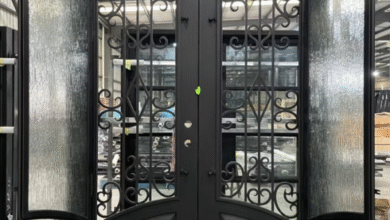Gather Here: Why Living Room Design Is About So Much More Than Looks

There’s a reason we call it the living room. It’s where life happens—in all its messy, beautiful, spontaneous forms. It’s where we curl up with coffee and a book, host friends for game night, binge-watch our favorite shows, or just lie on the floor with the dog after a long day. And yet, so often, this space becomes a bit of a design catchall. A sofa here, a rug there, maybe a lamp if we’re feeling fancy. Done.
But the truth? A well-designed living room can change the way you experience your entire home.
Let’s talk about it—not in the jargon of catalog layouts or design trends that change faster than the weather—but in real, relatable terms. Because good living room design isn’t about perfection. It’s about presence. It’s about creating a space that feels as alive as the people who use it.
Start With a Feeling, Not Furniture
You can scroll Pinterest for hours and come away more confused than inspired. Modern farmhouse? Japandi? Mid-century with a twist of industrial chic? The truth is, the best designs don’t start with a style—they start with a vibe.
Ask yourself this: how do you want your living room to feel? Cozy and intimate? Open and breezy? Playful and vibrant? Calm and grounding?
Once you know that, the pieces start falling into place. Color, lighting, texture—they all serve that emotional tone. Maybe you want moody navy walls and velvet cushions. Or maybe it’s soft whites, layered neutrals, and open shelving. There’s no one right answer. Just your answer.
Layout Is Everything (Seriously, Everything)
We don’t talk about flow enough. You could have the most beautiful pieces, but if the layout’s off? The room won’t work. You’ll feel it—awkward conversations, cramped walkways, that one chair no one ever sits in because it’s just… weird.
This is where a seasoned living room designer makes a world of difference. They know how to zone an open-concept space so it doesn’t feel like a furniture store. They understand scale—how to pick a sofa that fits without swallowing the room, or how to anchor a space with the right-sized rug (spoiler: most people go too small).
Good design isn’t flashy. It’s intuitive. You don’t notice it when it’s done well—you feel it.
Layers, Not Labels
Want a room that feels curated, not cookie-cutter? Stop worrying about whether everything “matches.” Some of the most compelling spaces mix old with new, high with low, structured with soft.
Add layers. A structured sofa with a chunky knit throw. Sleek metal lighting above a raw wood coffee table. A bold gallery wall next to a quiet reading nook.
Your living room should tell a story—and not just one you found on someone else’s mood board. Let it reflect the places you’ve been, the textures you love, the people and moments that matter most.
Lighting: The Silent Hero
Natural light is great, sure. But unless you live in a glass house (please invite us over), you’ll need layers of light. Overhead fixtures, floor lamps, task lighting, dimmers—each one serves a different mood and moment.
Want cozy evenings? Warm-toned bulbs. Need task lighting for reading? Adjustable arms and focused beams. Want your artwork to shine? Accent lighting makes a huge difference.
It’s wild how lighting alone can shift the entire tone of a space—and yet it’s often an afterthought.
Storage That Doesn’t Scream “Storage”
We all want tidy rooms, but nobody dreams of wall-to-wall cabinetry unless they’re hiding a hoarding habit. The secret? Storage that blends in.
Think ottomans that open up. Coffee tables with drawers. Shelving that holds books and plants and personality.
When storage becomes part of the design, not an apology for clutter, your space stays both functional and stylish—without shouting about it.
Personality Over Perfection
Let’s get one thing straight: your living room doesn’t need to be showroom perfect. It just needs to feel like you. That means it’s okay if your coffee table has a few dings, or your throw pillows don’t match.
In fact, it’s better that way. A little imperfection adds warmth, humanity, and character. This isn’t a photoshoot—it’s your life.
And if you’re feeling stuck? Bring in someone who can see the forest through the furniture. A living room interior design, living room designer, living room design expert can help bridge the gap between your vision and the realities of the space—without turning it into someone else’s version of stylish.
Small Changes, Big Shifts
Not ready for a full-blown redesign? No problem. Sometimes, the smallest updates create the biggest impact. Rehang your curtains higher. Rearrange your layout. Swap out tired throw pillows. Layer in a textured rug or hang art that makes you smile every time you see it.
Design isn’t about big budgets—it’s about better choices.
Final Thought: Make Space for Living
In the end, your living room should invite you in. It should offer comfort without asking for perfection. It should flex with your life—quiet mornings, chaotic family nights, impromptu dance parties.
So take the time to think about how you want to feel in your space. What you want it to say when you walk in. What memories you want it to hold.Because when a living room is designed with heart, it doesn’t just look good—it makes living in it feel even better.



